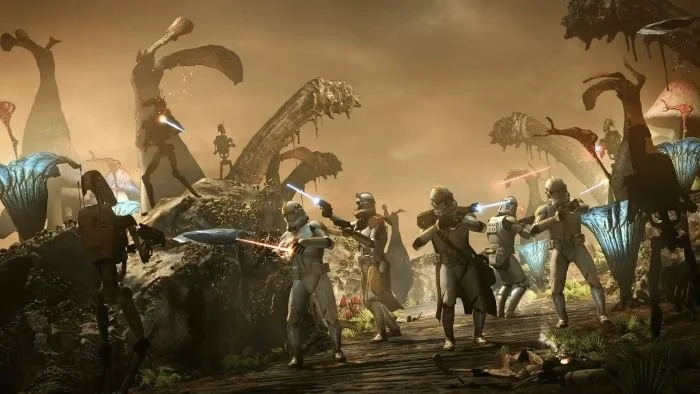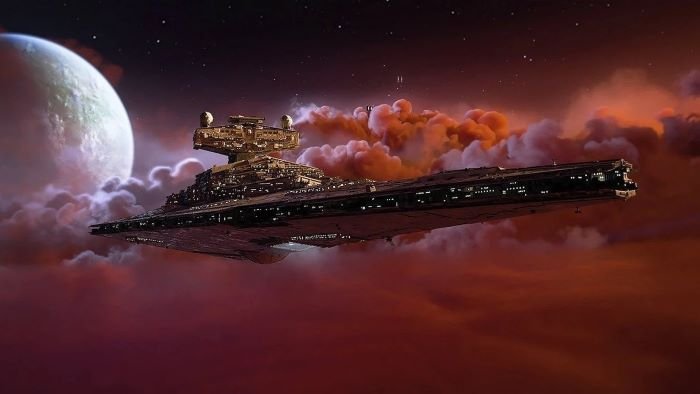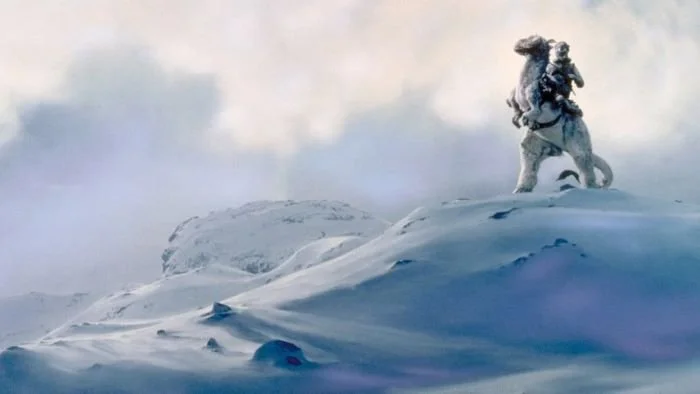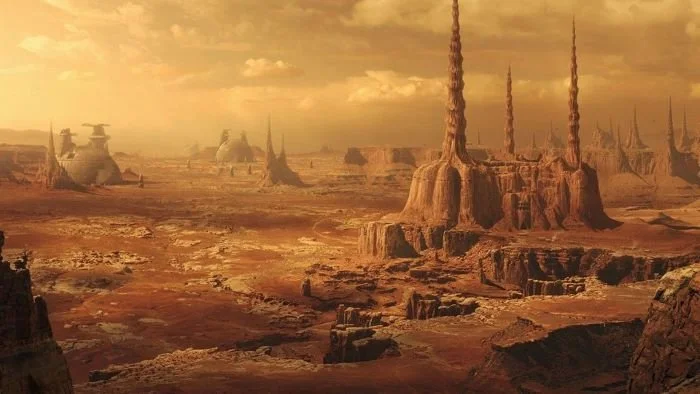A Quick Guide To The Outer Rim Territories: Part 2
Image Source: IGN
There are many planets in Star Wars. They are each divided up into different sections of the galaxy, called the Outer Rim, Mid Rim, and Inner Rim. There are also planets that are so far out, that they’re not part of any section. We already discussed a few planets in the Outer Rim Territories. Here are the rest of them.
Felucia
Image Source: Star Wars Latin America
This colorful, yet humid jungle planet is located within the Felucia. It is made up of a unique combination of fungi species. It served as the headquarters for the Commerce Guild, and its primary export crop was the healing herb nysillin. It became an important planet during the Clone Wars, as it was located on a primary trade route.
RELATED:
Yavin Prime
Image Source: Star Wars: Squadrons Wiki
Yavin Prime is an orange gas giant and is nearly 20,000km in diameter. The clouds provide cover in the battle to whoever may need it but could be dangerous if you drive too far. It is orbited by 26 moons, one of which is Yavin 4.
We first saw Yavin 4 and the Rebel Alliance base in Star Wars: A New Hope and then later in Star Wars: Rebels.
Hoth
Image Source: StarWars.com
The remote and icy planet of Hoth is located in the star system of the same name and is located within the Anoat sector. It is home to the primitive wampa species.
This is where the Rebel Alliance set up temporary headquarters called Echo Base. However, The Empire was able to find them, leading to the Battle of Hoth as depicted in The Empire Strikes Back.
Bespin
Image Source: Wallpaperaccess
This planet is also located within the Anoat sector. The gas giant, contains a thin strip of habitable atmosphere, called the Life Zone, which is located above a rare source of tibanna gas. There is no habitable land or bodies of water located on the planet. Cloud City is located within the breathable atmosphere and is suspended in the planet's huge, billowing clouds. While rare for a gas giant, it is home to many different types of life.
Endor
Image Source: Wallpaperaccess
The small forested moon from Return of the Jedi is no planet. It is the ninth moon that orbits the planet of the same name. The homeworld of the Ewoks is covered in dense woodlands, tall mountains, and savannas. It contains a breathable atmosphere for humans and has 8% surface water.
The Rebel assault on the shield generator located here allowed Death Star II to be destroyed and end the Empire once and for all.
Geonosis
Image Source: StarWars.com
The desert planet home of the native Geonosians is situated within the Arkanis sector in the Geonosis system. It was home to the battle-droid foundries and was also the site of the first battle of what would be known as the Clone Wars. It has a breathable atmosphere, but a hot desert climate. The surface is irradiated and covered in harsh, rocky deserts. As a result, both its rocks and sky were tinted red.
The construction of the Death Star would begin here above the planet. After the Death Star was moved, the Empire sterilized the planet, which resulted in the virtual elimination of the native population.
Utapau
Image Source: Rebel Scum
Located in the Utapau system, the planet Utapau has a temperate climate, but a rocky terrain of desert plains and large sinkholes. There was a massive “ocean world” below the surface. Due to the lack of timber on the planet, a lot of the architecture was made out of the bones of deceased animals. The Pau’ans and the Utai are native to the planet.
We see this planet in Revenge Of The Sith when Obi-Wan finds a Separatist outpost. He and General Grievous would have their final duel here, which resulted in Obi-Wan killing the cyborg.
The Outer Rim is the largest region in the galaxy and is home to many diverse worlds, and rugged frontier planets. Many of them play an important role in various Star Wars stories.
READ NEXT:
Source(s): Wikipedia, Wookieepedia




















